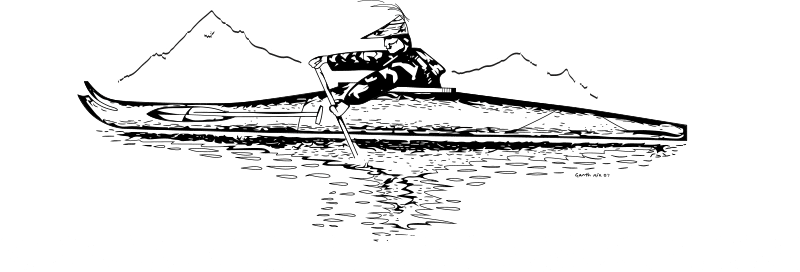BUILDING ECONOMIC RESILIENCE
Our perception of Economic Resilience was altered for generations at the start of 2020 with the sudden shutdown of our way of life in the wake of the COVID-19 pandemic. The resulting economic impacts were sudden and hard for many people, industries, and communities. However, depending on a person’s economic status or profession, the severity of the economic impact may have been more limited.

In recent history, our state’s fishery industry was impacted by the pink salmon disaster and the cod collapse. Additionally, the Alaska State budget is still experiencing fall-out from the steep drops in the price of oil. Unexpectedly, it was the COVID-19 Pandemic that most significantly impacted the Kodiak economy.
Building economic resilience to mitigate negative impacts on the economy as a whole requires preparation and planning. Economic diversification allows the impacts on any one industry to be spread more broadly across the economy. Disaster preparation planning provides the opportunity to intentionally implement a plan in response to the event rather than ineffectively reacting.
This CEDS addresses economic diversification in the following ways:
ENERGY SECTOR
The Kodiak Electric Association (KEA) is known worldwide as an example of renewable energy generating nearly 100% of electricity through hydro and wind. KEA provides the Kodiak road system and the village community of Port Lions with electricity costs that are competitive with that of Alaska’s mainland. KEA’s energy production portfolio provides evidence that the climate and geography of the region are capable of supporting renewable energy production.
The village communities in the Kodiak Archipelago have actively engaged in energy planning for many years. Kodiak leaders and stakeholders are working to reduce dependency of diesel fueled electricity generation to stabilize costs and thus increase community resilience and self-sufficiency. Reducing diesel fuel usage also mitigates the impact of fuel delivery issues, including from natural disasters, the potential for fuel/oil spills, and worldwide fuel supply issues.
BROADBAND INTERNET
Since March 2020, access to broadband internet speeds has provided employment and educational opportunities when our daily in-person interactions were ground to a halt. People without access to broadband internet speeds were at a clear disadvantage – unable to work or attend school remotely, or even access the much-needed government recovery programs intended to support families and communities to weather the economic shutdown.
In order to participate in the modern economy, our communities need access to reliable broadband internet. Long-term economic resilience and recovery will be challenging without it. Faster, reliable, and more affordable internet creates opportunities for economic development and increased economic resilience.
FISHERIES
Sustainable and responsible harvesting practices with access to fishery resources that are anchored to the coastal village communities will move the Kodiak region towards increased economic resilience. The wide diversity of fishery species in the Kodiak Archipelago provides nearly year-round industry opportunities. Economic resilience is contingent on establishing effective fishery policies that view fisheries as a holistic ecosystem. This includes participation by the indigenous people who have historically been tied to the sea and it considers the impacts of fisheries management decisions on local economies, culture, and heritage.
Alaska Native and rural coastal community representation on federal and state policy-making bodies is essential to returning fisheries access to our small coastal communities. Returning fisheries access to our small coastal communities shall provide increased community and economic resilience.
AGRICULTURE
Increased participation in the agriculture industry in Kodiak, and particularly in our village communities, will provide increased, long-term economic stability and resilience. Locally grown produce and products will increase Kodiak’s food security and reduce our dependence on foods imported into Alaska. While a major focus remains on satisfying the local demand, increasing production beyond local demand creates an opportunity for exporting off-island and throughout Alaska.
The emerging hydroponic agriculture industry increases opportunities for year-round production. As communities on the Kodiak road system and Port Lions currently benefit from low-cost energy, they could especially benefit from investments in hydroponics.
MARICULTURE
The mariculture industry in Kodiak benefits from access to clean coastal waters. This workforce is experienced in the marine environment, existing infrastructure and marine equipment used in the fishing industry. Additionally, the growing and harvesting seasons of mariculture crops are naturally outside of the main fishing seasons which provides industry participation. Mariculture, and polyculture (seaweed and shellfish farming) will provide economic diversification that supports increased economic resilience.
The mariculture industry in Kodiak presents opportunities for both product and raw material export as well as the potential for foreign direct investment. Food and pharmaceutical grade raw ingredients are used worldwide for product manufacturing. Emerging technology to manufacture mariculture raw materials into bioplastics and biofuels could provide manufacturing opportunities in Kodiak.
The mariculture industry has an opportunity for carbon sequestration, supporting reduction of climate change impacts.
TOURISM
Increased tourism capabilities and infrastructure in Kodiak and participating village communities supports increased economic diversification in the region. Tourism activities are drivers of economic development and economic diversification.
The tourism sector was impacted significantly by the Covid-19 pandemic due to travel restrictions and stay at home orders. The pandemic caused cruise ship cancellations for all of the 2020 season and nearly all of the 2021 season. Tourism businesses that survived the economic fallout of the pandemic are experiencing pre-pandemic levels of business return.

